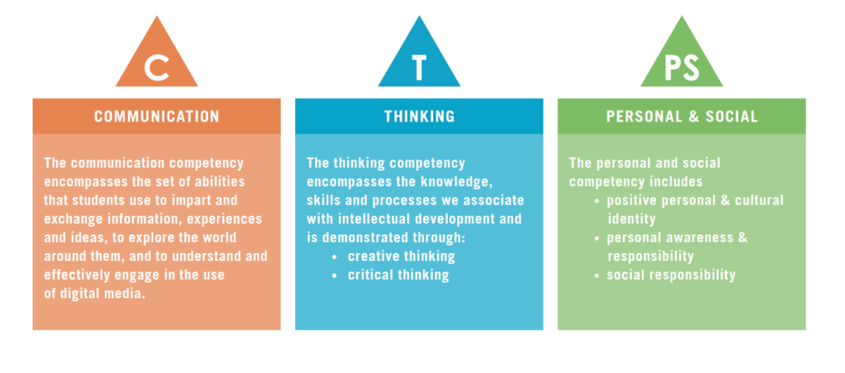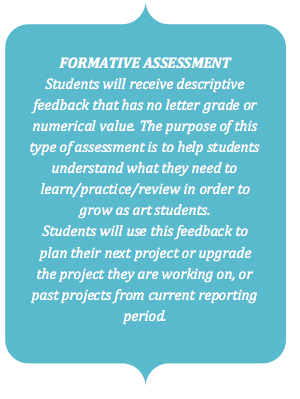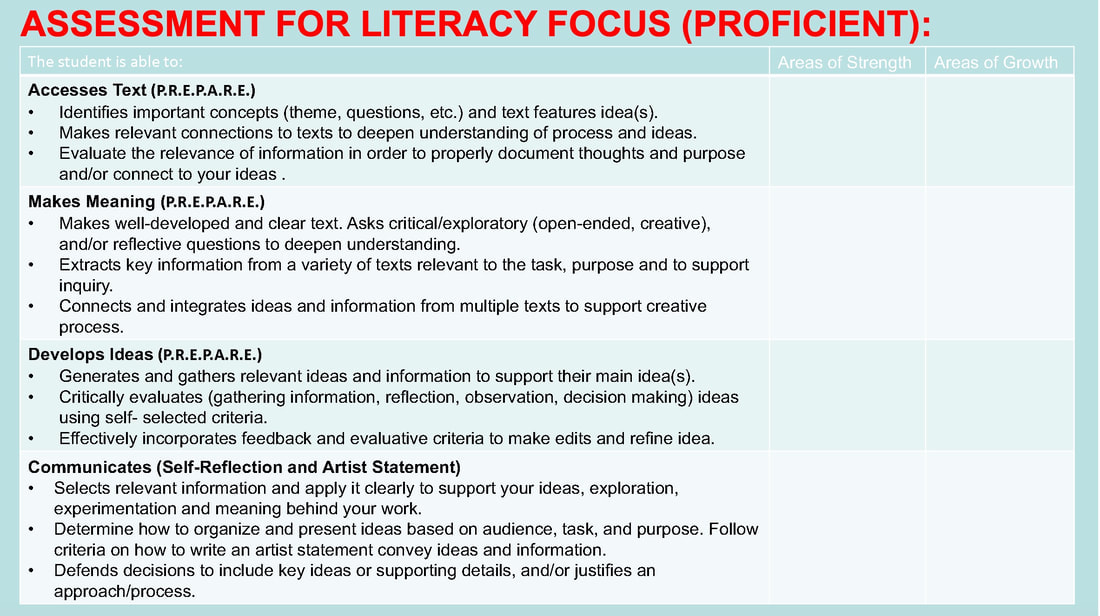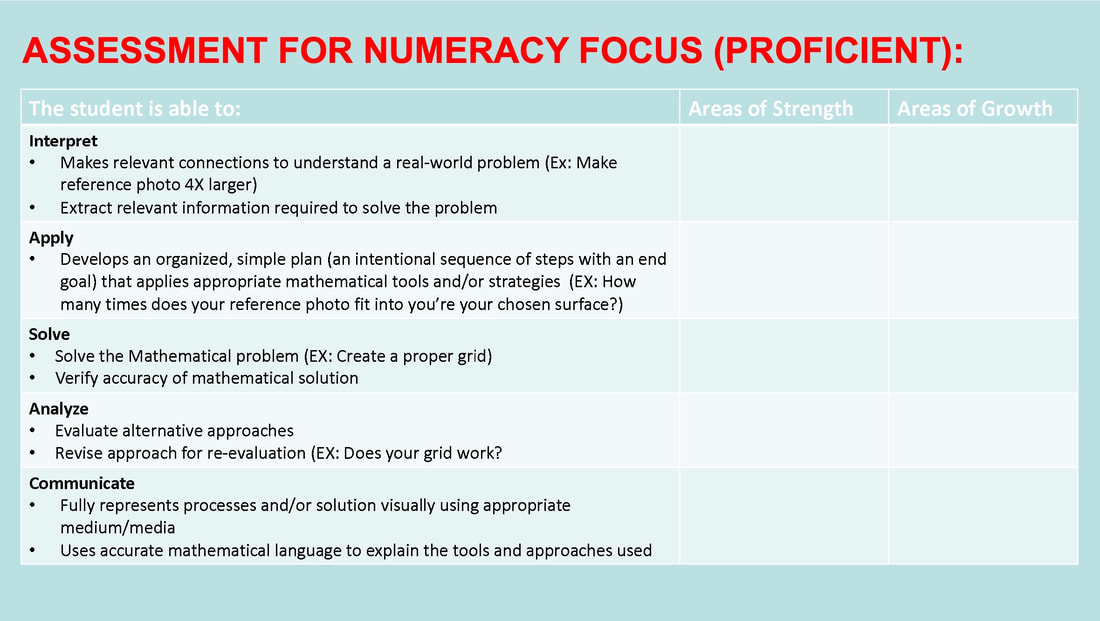ART STUDIO 11 AND 12 COURSE OUTLINE
As members of Surrey Schools, we would like to humbly acknowledge that we live, work, play and engage in the act of education on the stolen, unceded and traditional shared territories of the hən̓q̓əmin̓əm̓-speaking q̓əc̓iy̓ (Katzie) and q̓wa:n̓ƛ̕ən̓ (Kwantlen) Coast Salish peoples and the North Straits Salish-speaking Semiahmoo Coast Salish peoples.
Indigenous Perspectives: Indigenous knowledge and perspectives are an important part of the historical foundation of both BC and Canada and are integrated into every subject in our curriculum. All students will have opportunities to better understand and respect a variety of cultures, both their own and others.
Indigenous Perspectives: Indigenous knowledge and perspectives are an important part of the historical foundation of both BC and Canada and are integrated into every subject in our curriculum. All students will have opportunities to better understand and respect a variety of cultures, both their own and others.
DESCRIPTION:
ART STUDIO FOUNDATIONS 11/12 will develop skills learned in previous art courses. Students will review design, drawing, painting, printmaking, and three-dimensional work. Personal growth will be encouraged through development of individual portfolio images. These may include a variety of media best suited for your personal imagery.
ART STUDIO 2D 11/12 is designed for students who wish to focus on the elements and principles of design with a two-dimensional application (such as drawing, painting, printmaking, graphic design, multi-media and media arts). Imagery, historical and contemporary development and reasoned criticism will be applied to all projects.
ART STUDIO 3D 11/12 is designed for students who wish to focus on the elements and principles of design with a three-dimensional application (such as ceramics, sculpture and multi-media). Imagery, historical and contemporary developments and reasoned criticism will be applied to all projects.
ART STUDIO 2D 11/12 is designed for students who wish to focus on the elements and principles of design with a two-dimensional application (such as drawing, painting, printmaking, graphic design, multi-media and media arts). Imagery, historical and contemporary development and reasoned criticism will be applied to all projects.
ART STUDIO 3D 11/12 is designed for students who wish to focus on the elements and principles of design with a three-dimensional application (such as ceramics, sculpture and multi-media). Imagery, historical and contemporary developments and reasoned criticism will be applied to all projects.
ASSIGNMENTS AND PROJECTS:
Art Studio courses rely heavy on scope and sequence. Students should do their best to complete all the assignments. It is the student’s responsibility to make up work missed due to absence. Students will be expected to attend class on a REGULAR basis, as demonstrations/tutorials/instructions could be missed. If class time isn’t being used productively, students should anticipate spending additional time outside of classroom sessions to complete the work assigned. Studio is open lunch and after school daily (unless otherwise posted). If you miss a lesson or sketchbook assignment, please visit your teacher's website or class Microsoft Team.
CORE COMPENTENCIES:
COURSE BIG IDEAS:
CURRICULAR COMPETENCIES:
Students are expected to be able to do the following ("I" Statements)
Reason and Reflect
Connect and Expand
Explore and Create
Communicate and Document
Reason and Reflect
- I can understand the purpose of critiques and feedback. I can accept constructive feedback and use it to make changes that improve my work.
- I can ask questions about and describe how artists and their peers use materials, technologies and techniques in their art making. I can do this using art terms/language.
- I can ask questions about and try to understand why artists make certain choices in their works.
- I can come up with thoughtful answers/responses to questions about art, why it is important, and what makes it valuable.
- I can reflect on the way that personal, social, cultural, environmental, and historical issues impact artistic works.
Connect and Expand
- Create works of art that convey their personality and world views.
- Think about Indigenous perspectives, customs, and ways of understanding the world and their place in it.
- Explore possible careers in visual arts. Understand the different opportunities there are for them to study or work in visual arts after high school.
- Use art to connect with people from other schools, cities, or countries.
Explore and Create
- I can create art by using my senses (what I see, what I hear, what I smell, what I feel), my imagination, and inquiry (inspired by questions I have).
- I can learn by experimenting and thinking creatively using lots of different materials, techniques, and technologies.
- I can put thought into the materials, techniques and technologies that I choose to use so that I am able to create art that clearly shows my ideas.
- I can learn from taking risks and making mistakes.
- I can improve my technique as an artist by learning about different styles of art and practicing them.
- I can put thought into my creations and when I come to a challenge or road block, I can use it as an opportunity to be creative and try something different.
- I can understand the importance of the history of art and the works created by famous artists. I can make connections between what was happening in the world at the time that certain styles were created and subject matters were explored.
- I can understand, apply, and demonstrate the elements of art and the principles of design.
Communicate and Document
- I can photograph, post, and talk about/write about my work. I can reflect on the way that personal, social, cultural, environmental, and historical issues impact my artistic works.
- I can use art to show that I understand who I am, where I come from, and how I fit in to the world.
- I can share ideas and express feelings through the art that I create.
- I can use art to comment on things that are happening in society and the world.
ASSESSMENT:
|
The purpose of assessment is to facilitate learning and move it forward in an equitable and inclusive way. It helps students answer three questions about their learning:
Students are responsible for planning and creating work to satisfy the curricular competencies. |
Student assessment will be based on the following:
- Brainstorming, preliminary drawings and image collection that demonstrate thinking process and development of ideas (P.R.E.P.A.R.E.).
- Daily drawing and other sketchbook exploration assignments throughout the semester.
- Participate in class critiques, regular peer and teacher feedback.
- Regular documentation of work in the students digital art portfolio (daily or weekly documentation based on assignment expectations).
- Complete weekly guided reflections in digital art portfolio.
- Exploration of techniques and experimentation of materials (assignments and projects).
- Reporting assessment will be generated after the student/teacher mid-term and final portfolio interview.
PROFICIENCY SCALE:
LITERACY AND NUMERACY FOCUS:
B.C.’s redesigned curriculum supports deep learning through concept-based and competency driven approaches. In addition to the Core Competencies and the Arts Education curricular competencies, emphasizes literacy and numeracy as skills interwoven throughout all learning areas.
While literacy and numeracy are commonly associated with language arts and math, thinking and communication skills are applied to all areas of learning, as described by the curricular competencies. Being numerate and literate are essential aspects of the educated citizen.
While literacy and numeracy are commonly associated with language arts and math, thinking and communication skills are applied to all areas of learning, as described by the curricular competencies. Being numerate and literate are essential aspects of the educated citizen.
DIGITAL PORTFOLIO:
The visual arts program will be using MyEdBC, Microsoft 365 Teams and SPACES EDU to communicate learning, self-reflect and assessment. Students will be asked to document their work and complete self-assessment weekly using SPACES. Student can access their SPACES account using their school district login credentials (ex. [email protected] and password). Students will be able to use SPACES through the online portal. Parents will be sent an invite and will be able to see student assessment and assignments using the SPACES Parent online portal.
CLASSROOM EXPECTATIONS:
- BE ON TIME to class! Don't wait for teacher to start the class, students have 10 minutes to work on their daily drawing.
- IF AWAY, students must make up missed work. Visit the class website for missed lessons and sketchbook assignments.
- Bring your art supplies daily! Be prepared to work at the start of class.
- HALL PASS will be required in order to leave the classroom. Our school policy is that ONE student is allowed out at a time for washroom and locker visits. Students with appointments with support staff, will also require a hall pass.
- No use of others ideas, images, paintings or drawings as they are already the creation/idea of another artist. The use of other people’s work is PLAGIARISM! Students will need to demonstrate progress DAILY!
- BE RESPECTFUL (of yourself and others) this includes: teachers, your peers and guests.
- NO FOOD or beverages (unless it has a lid) are permitted in the classroom during instructional time. Students will NOT be allowed to leave the classroom to use the cafeteria or vending machines, as we have a NO FOOD policy in the art classroom during instructional time. Please plan accordingly if you required food or drink (special circumstances are an exception).
- Clean-up after yourself! At the end of class students need to clean-up their studio space and materials. Students will also need to put away their artwork and sketchbook in the assigned space.
- Don't touch others projects or supplies without permission.
- Try your BEST!
CLASS CELLPHONE POLICY:
Students can ONLY use your cellphones for research, work documentation and assessment during Studio Time! Student will be warned first. If the over use of technology continues, students will be invited to place their devices in our “Cell Phone Hotel.” If continued warnings do not work, and email home will be sent. If it continues, administration will be contacted. We have a class set of iPads and laptops available for students to use for research and posting on SPACES. Do’s: You can listen to music (commit to a playlist/NO surfing for songs), take pictures of your artwork, and look up image resources for project ideas you are working on. Don’ts: Play games, calls, text or message, social media, and take selfies or pictures of other students in the class.
ART SUPPLY STORE:
MUST BRING ART SUPPLIES (items with an asterisk*) to EVERY class… NO EXCEPTIONS!! *Pencils (HB, Optional 3B and 5B), *eraser, *sketchbook, *fine tip black felt pen (fine tip sharpie is a good option for beginners. A Fine Tip Micron is recommended for more advanced students), and *pencil crayons (Crayola pencil crayons are a good option for beginners. Prisma pencil crayons are recommend for more advanced students).
Keeping a sketchbook is an ESSENTIAL part of the Art Studio program at Salish. We recommended to get a coil bound or hard bound sketchbook with over 100-150 pages (8.5x11). Before purchasing a sketchbook, make sure to look at the paper quality and purpose. We suggest a mixed media or sketching quality paper. Students will work on their sketchbooks on a DAILY BASIS. Students can continue to use sketchbooks from a previous art class.
Students health and safety is our primary concern! We encouraged students to bring their own supplies to their tutorial, such as a ruler, scissors, glue, felts, etc. We have some of these supplies in the classroom, but families need to be aware that multiple students will have access to them and materials won't sanitized. Students are responsible to sanitize any shared supplies. The program will supply students with project paper, acrylic paint and specialty materials (clay, clay tools, inks, etc.). We will also have brushes that will be shared with their class. If students don’t want to share brushes, they are welcome to bring their own.
Keeping a sketchbook is an ESSENTIAL part of the Art Studio program at Salish. We recommended to get a coil bound or hard bound sketchbook with over 100-150 pages (8.5x11). Before purchasing a sketchbook, make sure to look at the paper quality and purpose. We suggest a mixed media or sketching quality paper. Students will work on their sketchbooks on a DAILY BASIS. Students can continue to use sketchbooks from a previous art class.
Students health and safety is our primary concern! We encouraged students to bring their own supplies to their tutorial, such as a ruler, scissors, glue, felts, etc. We have some of these supplies in the classroom, but families need to be aware that multiple students will have access to them and materials won't sanitized. Students are responsible to sanitize any shared supplies. The program will supply students with project paper, acrylic paint and specialty materials (clay, clay tools, inks, etc.). We will also have brushes that will be shared with their class. If students don’t want to share brushes, they are welcome to bring their own.
|
*Optional: Sketchbook, shading pencils and some specialty supplies can be purchased from our school. Visit our School Art Supplies store (click button):
|






